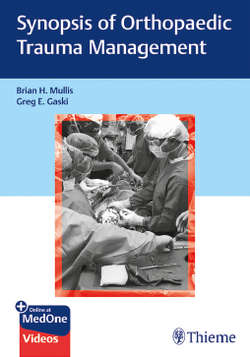Читать книгу Synopsis of Orthopaedic Trauma Management - Brian H. Mullis - Страница 39
На сайте Литреса книга снята с продажи.
I. Definitions
ОглавлениеA. Stress is a force applied to an object distributed over the area that bears the load and is measured in Newtons per meter squared N/m2 (pascal).
B. Strain describes a change in shape in response to an applied stress. In axial loading, strain is the change in length of an object over the original length. In fracture management, multiplanar motion at the fracture site gives rise to complex three-dimensional strains.
C. A stress–strain curve is the experimentally observed relationship between applied load (stress) and deformation (strain) for a given material (see ▶Fig. 4.1). This curve also defines other material properties.
D. Young’s modulus of elasticity (E) describes the stiffness of a material and is defined by the slope of linear portion on a stress–strain curve. The modulus E is measured in megapascals (MPa) and is intrinsic to the material, so it does not depend on material geometry. The more stress it takes to deform an object, the steeper the curve (higher E).
Fig. 4.1 Representative material stress–strain graph showing Young’s modulus of elasticity (E), proportional limit (P), yield strength (σY)), and ultimate strength (σU)).
E. Proportional limit (P) of a material is the point on the stress–strain curve of a material after which any additional applied stress will cause nonelastic permanent deformation. For many materials, including implant-grade metals, the proportional limit is equal to the elastic limit.
F. Elastic deformation is the change in shape that is completely reversible when the applied stress is removed.
G. Plastic deformation or permanent set is deformation that does not completely resolve when stress is removed. When plastic deformation occurs, the object’s shape is permanently altered because of damage to the material microstructure.
H. Strength is the ability of a material to withstand applied loading without failure (breakage) or plastic deformation.
I. Yield strength (σY) is the stress at which a material starts to experience plastic deformation and it typically coincides with the proportional limit (P).
J. Ultimate strength (σU) is the stress in a material when catastrophic failure occurs following a one-time overloading event and corresponds to point UF of the stress–strain curve.
K. Fatigue strength (σN) is the maximum stress a material can withstand for N cycles of repeated loading. Trauma implant components are typically designed to withstand at least several hundred thousand cycles of weight bearing loading before fatigue failure (▶Fig. 4.2).
L. Endurance limit (σE) is the stress at which a ferrous material, such as stainless steel, can experience infinite cyclic loading without failing. Nonferrous metals including implant-grade titanium alloys have a fatigue limit, which is the stress corresponding to failure at a defined limit such as 500 million loading cycles.
M. Stiffness describes the ability of a material or of a manufactured part to resist deformation in response to an applied load. The material stiffness, or Young’s modulus E, does not depend on part geometry. The part stiffness is a function of the part geometry, the material’s Young’s modulus E, and the mode of loading (e.g., axial tension/compression, bending, or torsion). Choosing a larger part (e.g., thicker plate, larger-diameter nail or screw) always increases construct stiffness.
N. Flexural rigidity is a measure of the force required to bend an object and is the product of the material Young’s modulus of elasticity (E) and a geometric factor. For a plate with rectangular cross section, the flexural rigidity is proportional to the plate thickness to the third power (h3). For a screw or pin with a circular cross section, the flexural rigidity is proportional to the radius to the fourth power (r4).
Fig. 4.2 Representative fatigue life curves for metals. Higher applied loads (higher cycle stress amplitude, σa) are associated with earlier fatigue failure.
Fig. 4.3 (a) Six-month follow-up anteroposterior distal femur with plate osteosynthesis with a large fracture gap (malreduction). The working length (WL, distance between screws immediately adjacent to the fracture) is small creating a rigid implant. While the plate length (greater than 3 × WL) and screw density (< 50%) are appropriate, the screw very close to the fracture site limits the WL of the plate. The absence of callous at 6 months is due to the low-strain environment at the fracture site. The plate is experiencing high stress concentration right at the fracture site and may be subjected to failure. (b) Comminuted fracture fixed with a more flexible implant with longer WL. Callus formation is present at 3 months. Plate has stress spread across entire WL therefore minimizing strain and stress concentration. Interfragmentary screw may increase strain at main fracture site and may also cause formation of hypertrophic nonunion due to excessive strain at fracture site.
O. Stress concentration or a stress riser describes the local high stresses that arise near a defect such as a notch or hole. Locally high stresses also occur around loading contact points, such as near bone screws or where a nail contacts the endosteal cortex.
P. Fracture working length is the length between fracture ends.
Q. Implant working length is the distance between the closest fixation points (▶Fig. 4.3).
